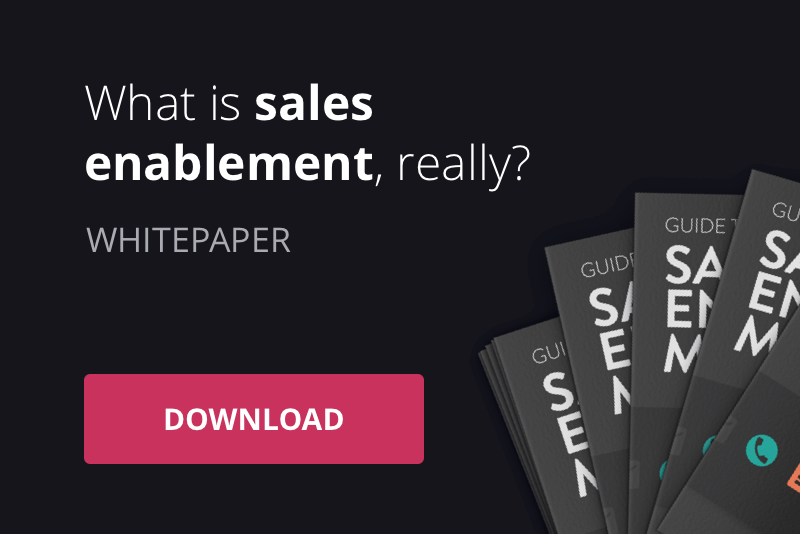
Salesforce — the most expensive rolodex in the world?
At a base price of $25 per user per month, Salesforce looks on the surface like a can’t-go-wrong affordable investment for any sales team.
The fact that it is the most popular and widely used CRM in the world contributes to the assumption that it’s a foolproof investment. Salesforce has almost achieved the same position of strength that IBM had back in the days when people said “You won’t get fired for choosing IBM.” But is Salesforce a safe pick? And is it as affordable as it looks on the surface? Or are you making one of three assumptions that will cost you millions?
Unfortunately, the data indicates otherwise. Let’s take a look at what Salesforce really costs for a 50-person sales team. Choosing Salesforce without understanding exactly how it will help you sell more and not just be a data repository, should actually be a reason to get fired.
- The low entry cost is really just a “land-to-expand” tactic and due to limited functionality in the base product, you’ll quickly need to upgrade to the $150/user per month level. For our imaginary average sales team of 50, this calculates to $7,500 per month base cost.
- Even with the upgrade to the mid-tier, most b2b sales organizations find that they need additional functionality that requires additional purchases, such as a prospecting tool, sales enablement and sales analytics. That will easily be another $100 monthly per tool per head, bringing the spending for our imaginary organization up to $22,500 per month for its team on Salesforce.
- The Salesforce subscription comes with limited built-in storage capability. Storage limits are complex, and many organizations will require additional storage, which will add to the cost. Due to the complexity of the rules, it can be difficult to predict when your organization will trigger a storage limit and require additional investment.
- So far, we’ve discussed only the cost of the subscription, not the cost of implementation, customization and training. These costs vary wildly, and it’s no secret that implementations can escalate out of hand very quickly. And they can take a long time, as it quickly becomes a very technical project, with skilled engineers needed to make proper customizations.
- When you combine the cost of consulting, technical execution, user training, and loss of productivity during implementation, those costs will quickly exceed $500k for the first year, plus ongoing costs of maintaining any customizations made.
This investment would still be a good investment if the ROI could be justified, which isn’t always the case:
- Sales research organizations including Gartner, Forrester, and others cite the CRM failure rate industry-wide at between 30% and 70%. Even at the low end, this is an unacceptable risk.
- User adoption within Salesforce is frequently very poor, especially if it’s a vanilla installation, without the proper customizations and plugins.
- By attempting to be a one-size-fits-all, Salesforce has ended up as a one-size-fits-none, requiring extensive customizations, which often create less than satisfactory results. Usually because of a combination of the buyer not being fully able to describe an informative and actionable sales process, the technical partner’s limited skills about sales processes and methodologies and the product’s limitations in some areas.
- Salesforce has no built-in capability focusing on driving successful behaviors by reinforcing a staged and milestone-based process, serving up sales enablement content, gamification, or information to sales managers in a way that makes their coaching more effective. The focus is on data-entry, information and lists, lists, lists.
- Salesforce does not come pre-configured with sales analytics that helps sales managers coach and iterate their sales process in an effective manner. To even get trending graphs, you will need buy additional Salesforce licenses and products.
- The additional plugins needed to complement Salesforce's shortcomings can be cumbersome to learn and, although integrated in Salesforce, have workflows that don’t tie well into the rest of the system, causing a loss of productivity.
In short, a vanilla Salesforce installation is only useful if your salespeople already know what to do at all times and are consistent in reliably recording information exactly the way you need it (which they see very little value in doing, hence the low adoption rates). Otherwise, the CRM becomes nothing more than a graveyard of information - a high-tech, gold-plated rolodex. Complementing Salesforce with plugins can quickly become expensive and actually cause a drop of productivity if the mishmash becomes too difficult to learn and the workflows messy.
Salesforce has built a massive company and a product that, on paper, can be tamed to do most of the tricks in the book. In reality, it’s a beast. And if you want your salespeople to beat the competition in a complex b2b sale, you should think twice before signing the dotted line. (See a side-by-side comparison of Membrain vs Salesforce.)
It doesn’t have to be this way
Whether you’ve already invested in Salesforce or are questioning the purchase, you have options. Membrain provides the sales-specific functionality Salesforce doesn’t, either as a plug-in inside your existing Salesforce instance, or as a stand-alone to replace it. Please reach out and we’ll discuss how a system designed to drive successful behaviors - instead of focusing on building a database - can help you take your sales team to the next level!
Plus, with our Clearpath Promise, you’ll know beforehand exactly how much your implementation will cost, and how long it will take - we guarantee it!
Some customer quotes & case studies:
“I use Membrain every day. My team uses Membrain every day. We use it in sales meetings and we use it in planning. We went from 50% to 104% quota attainment within a year, which we would not have accomplished without it.” - Roberto Scott, Sales Director, Analitek
“Conventional CRM tools couldn’t help us capture the potential of our new way of selling, which we feel Membrain is doing” - Sven-Erik Gustafsson, Sales Director, Scania Mining
“The challenge for us was finding the right tool that would encompass everything we believed a sales process should be.” - Paul O’Donohue, CEO of Salesstar

By George Brontén
George is the founder & CEO of Membrain, the Sales Enablement CRM that makes it easy to execute your sales strategy. A life-long entrepreneur with 20 years of experience in the software space and a passion for sales and marketing. With the life motto "Don't settle for mainstream", he is always looking for new ways to achieve improved business results using innovative software, skills, and processes. George is also the author of the book Stop Killing Deals and the host of the Stop Killing Deals webinar and podcast series.
Find out more about George Brontén on LinkedIn









